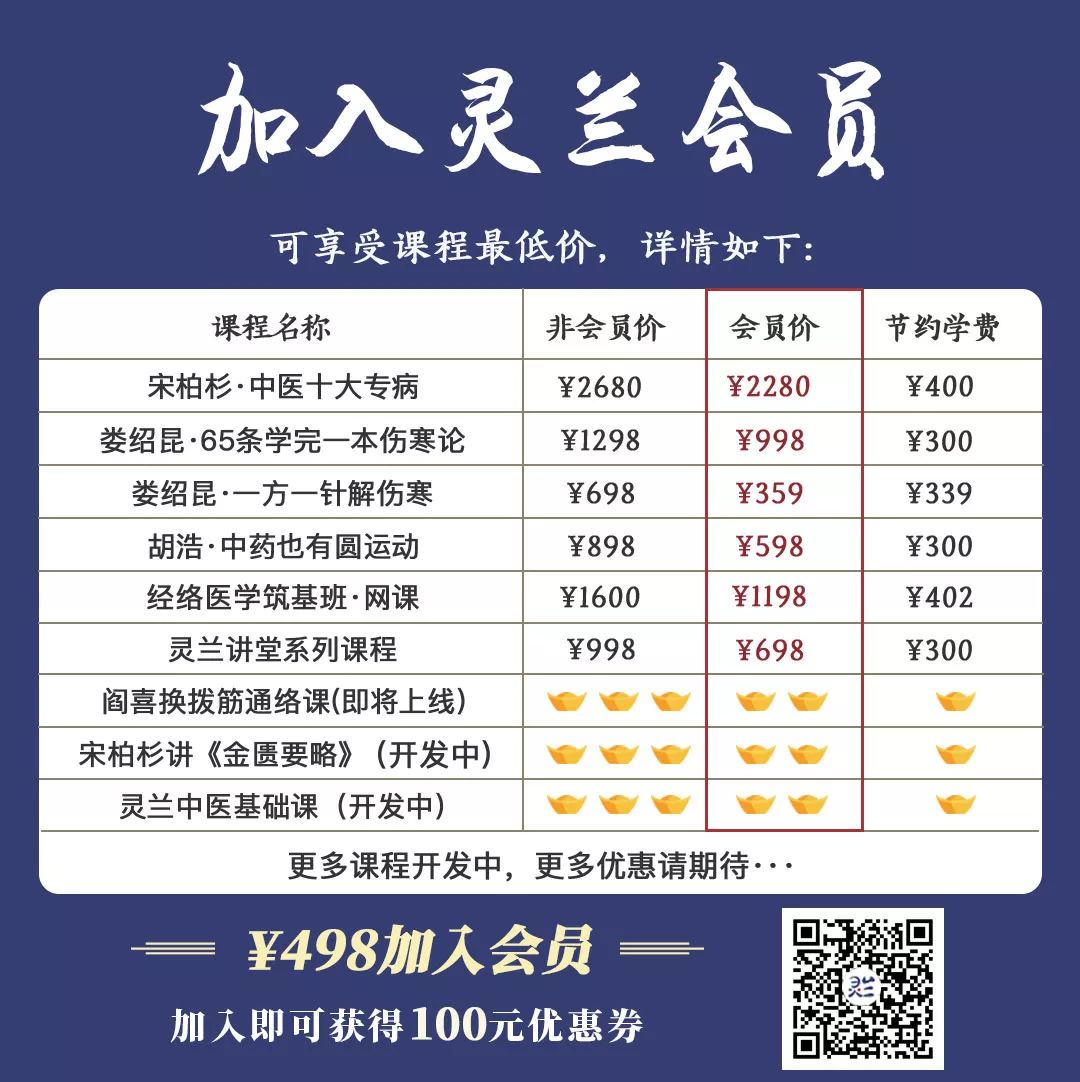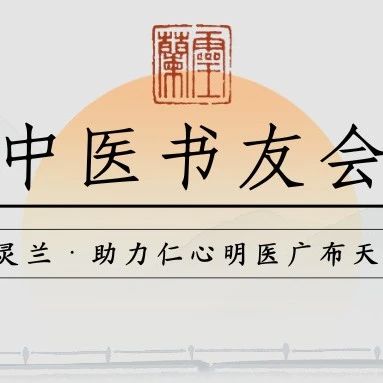
Chinese Medicine Book Club Issue 2246
Daily updates to accompany the growth of TCM practitioners
IIntroduction: Danggui Nian Tong Decoction was first recorded in the “Lan Shi Mi Cang” by Li Gao from the Jin Dynasty, specifically for treating lower back pain, with indications of swollen and painful feet, a white greasy tongue coating with slight yellow, and a wiry and rapid pulse. Master Zhang Qi has used this formula in clinical practice with satisfactory results for various diseases through pattern differentiation and modification. (Editor/Tang Yichao)

Danggui Nian Tong Decoction
Author/ Zhang Qi
The “Nian Tong Decoction” originates from the “Lan Shi Mi Cang” by Li Gao from the Jin Dynasty, stating: “Treating damp-heat conditions, with heavy shoulders and back, joint pain, and chest discomfort.” The ingredients include Bai Zhu (White Atractylodes), Ku Shen (Sophora Root), Sheng Ma (Cimicifuga), Ge Gen (Kudzu Root), Cang Zhu (Atractylodes), Fang Feng (Siler), Zhi Mu (Anemarrhena), Ze Xie (Alisma), Huang Qin (Scutellaria), Zhu Ling (Polyporus), Dang Gui (Angelica), Zhi Gan Cao (Honey-fried Licorice), Yin Chen (Artemisia), and Qiang Huo (Notopterygium). The formula is referred to as “Danggui Nian Tong Decoction” in the song of the decoction. It is primarily used for treating foot sores with symptoms of swollen and painful feet, a white greasy tongue coating with slight yellow, and a wiry and rapid pulse. In clinical practice, I have used this formula with modifications to treat various diseases with satisfactory results. The following is an introduction:
The Nian Tong Decoction is a formula that dries dampness and clears heat, disperses both upper and lower blockages, and promotes the flow of meridians and joints. In the formula, Qiang Huo and Fang Feng disperse wind-dampness from the joints. Sheng Ma and Ge Gen guide the clear qi upward, dispersing wind-dampness from the muscles. Cang Zhu and Bai Zhu strengthen the spleen and dry dampness. Ku Shen, Huang Qin, Zhi Mu, and Yin Chen are bitter and cold, drying dampness and clearing heat. Zhu Ling and Ze Xie promote urination to drain dampness. Dang Gui invigorates the blood and promotes circulation, ensuring smooth flow in the meridians. In clinical practice, I have applied the Nian Tong Decoction with modifications for the following damp-heat related diseases, achieving good results.
1. Allergic Purpura Nephritis
Modern medicine categorizes allergic purpura nephritis under small vessel vasculitis. I believe that in some patients, the etiology and pathogenesis involve damp-heat evil accumulating in the blood, causing blood to leak outside the vessels, manifesting as purpura on the skin; damp-heat descending through the meridians to the kidneys damages the vessels, leading to hematuria. The treatment should focus on clearing heat, draining dampness, cooling the blood, and stopping bleeding.
Case: Patient Liu, female, 56 years old, first diagnosed in early February 2005. After eating seafood hotpot, she developed purpura on both lower limbs, with a red tip on the tongue, a greasy yellow coating, and a wiry and slightly rapid pulse. Urinalysis showed protein (+) and 10-15 red blood cells/HP. The treatment used Danggui Nian Tong Decoction with added heat-clearing and blood-cooling herbs. Prescription:
Dang Gui (Angelica), Yin Chen (Artemisia), Ze Xie (Alisma), Zhi Mu (Anemarrhena), Zhu Ling (Polyporus), Ouyang (Lotus Root), Sheng Di Huang (Rehmannia), each 20g; Qiang Huo (Notopterygium), Bai Zhu (White Atractylodes), Cang Zhu (Atractylodes), Huang Qin (Scutellaria), Sheng Ma (Cimicifuga), Fang Feng (Siler), each 15g; Ku Shen (Sophora Root) 10g; Bai Mao Gen (Imperata) 30g.
After 14 days of treatment, the purpura completely resolved, and urinalysis showed negative protein and 1-5 red blood cells/HP. The formula was then modified by adding Ce Bai Ye (Platycladus) 20g and Xiao Ji (Cirsium) 25g, for 14 doses. After taking the medicine, no new purpura appeared, and the formula was continued for 30 doses with normal urinalysis, resulting in recovery. Six months later, follow-up showed no recurrence of purpura, and urinalysis was normal.
2. Rheumatoid Arthritis
Rheumatoid arthritis falls under the category of “Bi Zheng” in TCM, and using this formula for treatment aligns with the original text. It is indicated for damp-heat accumulation in the muscles and joints, causing muscle pain, joint swelling and redness, or systemic pain, with wind-damp nodules that are hard, painful, and swollen, or red spots that are intensely itchy, accompanied by heaviness throughout the body, thirst without desire to drink, yellow urine, irritability, chest tightness, a red tongue, yellow greasy coating, and a slippery and rapid pulse. The treatment should clear damp-heat and promote the flow of meridians.
Case: Patient Zhou, male, 46 years old, first diagnosed in early March 2003. Three days prior, after heavy drinking, he slept in his hallway for several hours and the next afternoon developed pain in all limbs, with swelling and heat in the left elbow joint, thirst without desire to drink, yellow urine, irritability, a red tongue, yellow greasy coating, and a slippery and rapid pulse. The diagnosis was damp-heat accumulation in the muscles and joints. The treatment was to clear damp-heat and promote the flow of meridians, using the Nian Tong Decoction with modifications:
Dang Gui (Angelica) 20g, Cang Zhu (Atractylodes), Huang Bai (Phellodendron), Huang Qin (Scutellaria), Zhi Mu (Anemarrhena), Qiang Huo (Notopterygium), Ze Xie (Alisma), Yin Chen (Artemisia), Ku Shen (Sophora Root), Zhu Ling (Polyporus), each 15g; Fang Feng (Siler) and Gan Cao (Licorice) each 10g.
After taking 10 doses, the swelling, heat, and pain in the left elbow joint and the pain in all limbs significantly reduced. After continuing with another 10 doses, the symptoms disappeared. Two years later, follow-up showed no recurrence.
3. Allergic Skin Papules
Patients with chronic renal failure often experience skin papules due to impaired kidney function, decreased glomerular filtration rate, and inability to completely excrete toxins. Some patients easily develop allergic skin papules after taking medication, with papules the size of fingernails, raised on the skin, red, and itchy. This is due to toxic heat accumulating in the blood, seeping into the skin, resulting in papules. The treatment should focus on draining dampness, clearing heat, invigorating the blood, and dispelling wind.
Case: Patient Liu, female, 60 years old, hospitalized in May 2004. Two months prior to hospitalization, she was found to have proteinuria (++), with blood creatinine at 585umol/L, diagnosed with chronic renal failure at a local hospital. After taking various Chinese and Western medicines, she developed papules on her face and both upper limbs, which were itchy, with blood creatinine at 608umol/L. Upon admission, the patient presented with skin papules, fatigue, poor appetite, a pale red tongue, white greasy coating, and a thin, rapid pulse. The treatment aimed to address the urgent symptoms, using the Nian Tong Decoction with modifications from Si Wu Decoction:
Dang Gui (Angelica), Yin Chen (Artemisia), Ze Xie (Alisma), Zhi Mu (Anemarrhena), Zhu Ling (Polyporus), Sheng Di Huang (Rehmannia), each 20g; Qiang Huo (Notopterygium), Bai Zhu (White Atractylodes), Cang Zhu (Atractylodes), Huang Qin (Scutellaria), Sheng Ma (Cimicifuga), Fang Feng (Siler), Chuan Xiong (Ligusticum), Chi Shao (Red Peony), each 15g; Ku Shen (Sophora Root) 10g; Bai Xian Pi (Dictamnus) 30g.
After taking 7 doses, the papules significantly reduced. Due to the patient’s renal insufficiency, the formula was adjusted by reducing Sheng Di Huang, Chuan Xiong, and Chi Shao, and adding Chan Tui (Cicada Slough) and Sha Ren (Amomum) each 15g, and Da Huang (Rhubarb) 10g, and Tao Ren (Peach Kernel), Zhi Shi (Bitter Orange) each 20g, and Tu Fu Ling (Smilax) 50g. After taking 7 doses, the patient’s papules completely disappeared. Subsequently, the treatment for renal failure was continued, and no skin papules recurred.
Recommended Reading
Master Zhang Qi’s Ten Methods for Treating Stroke
A Case Study on Erythematous Psoriasis (with multiple images)
|
I Copyright Statement
I Submission Email [email protected] |


